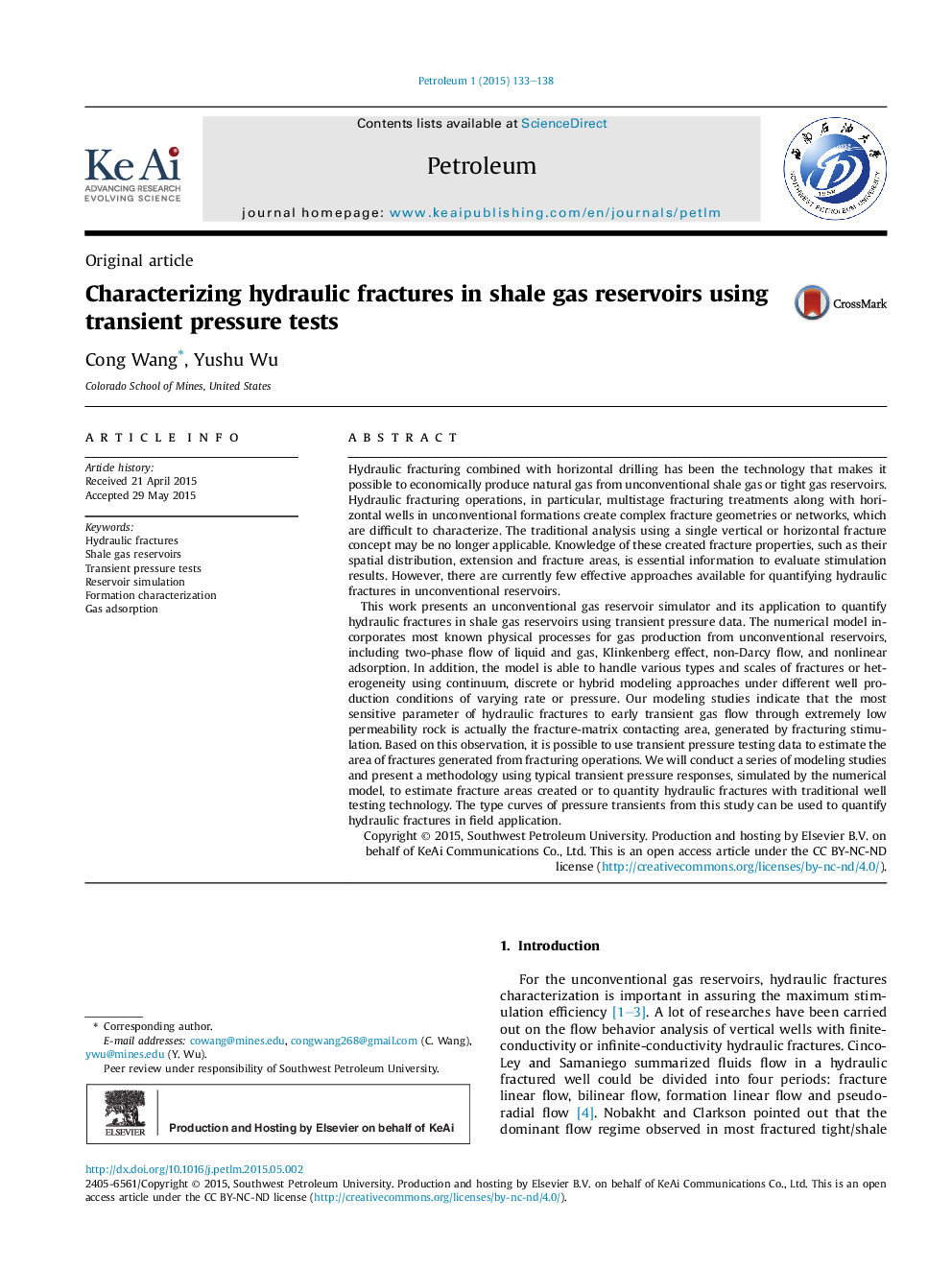| کد مقاله | کد نشریه | سال انتشار | مقاله انگلیسی | نسخه تمام متن |
|---|---|---|---|---|
| 852879 | 909462 | 2015 | 6 صفحه PDF | دانلود رایگان |
Hydraulic fracturing combined with horizontal drilling has been the technology that makes it possible to economically produce natural gas from unconventional shale gas or tight gas reservoirs. Hydraulic fracturing operations, in particular, multistage fracturing treatments along with horizontal wells in unconventional formations create complex fracture geometries or networks, which are difficult to characterize. The traditional analysis using a single vertical or horizontal fracture concept may be no longer applicable. Knowledge of these created fracture properties, such as their spatial distribution, extension and fracture areas, is essential information to evaluate stimulation results. However, there are currently few effective approaches available for quantifying hydraulic fractures in unconventional reservoirs.This work presents an unconventional gas reservoir simulator and its application to quantify hydraulic fractures in shale gas reservoirs using transient pressure data. The numerical model incorporates most known physical processes for gas production from unconventional reservoirs, including two-phase flow of liquid and gas, Klinkenberg effect, non-Darcy flow, and nonlinear adsorption. In addition, the model is able to handle various types and scales of fractures or heterogeneity using continuum, discrete or hybrid modeling approaches under different well production conditions of varying rate or pressure. Our modeling studies indicate that the most sensitive parameter of hydraulic fractures to early transient gas flow through extremely low permeability rock is actually the fracture-matrix contacting area, generated by fracturing stimulation. Based on this observation, it is possible to use transient pressure testing data to estimate the area of fractures generated from fracturing operations. We will conduct a series of modeling studies and present a methodology using typical transient pressure responses, simulated by the numerical model, to estimate fracture areas created or to quantity hydraulic fractures with traditional well testing technology. The type curves of pressure transients from this study can be used to quantify hydraulic fractures in field application.
Journal: Petroleum - Volume 1, Issue 2, June 2015, Pages 133–138
